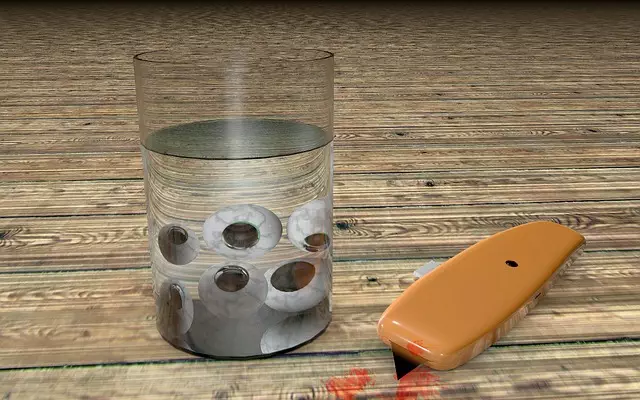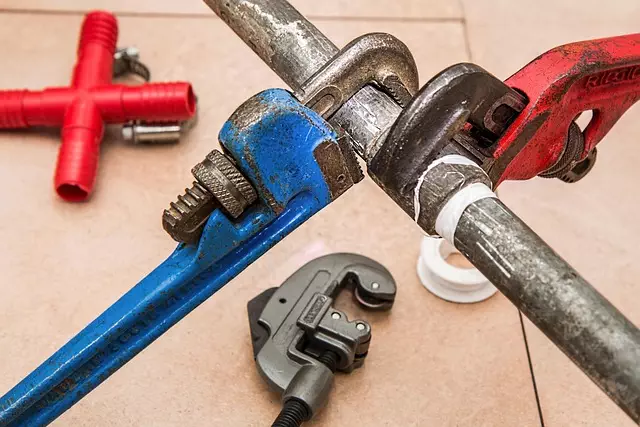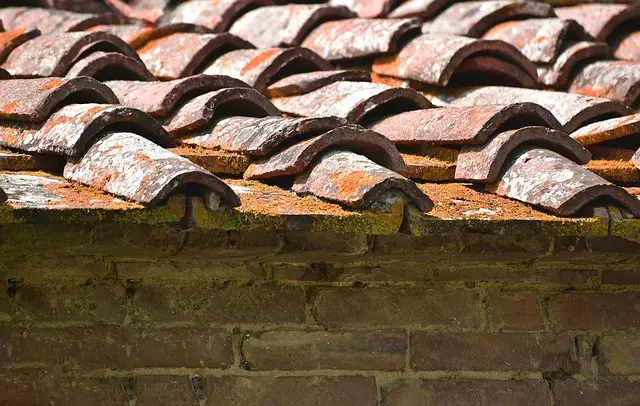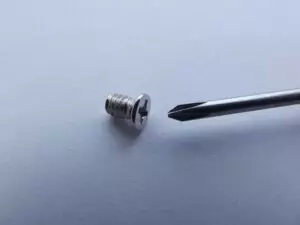Mastering Leak Detection: From DIY Tips to Advanced Technology
Water leaks in homes, often overlooked, cause substantial damage. This text highlights crucial leak…….

Water leaks in homes, often overlooked, cause substantial damage. This text highlights crucial leak sources like outdated pipes, faulty fixtures, and appliances. Timely leak detection is vital for protecting investments and preventing costly repairs, mold growth, and health hazards. Modern technologies include smart water meters, moisture sensors, and remote monitoring systems for precise identification. Basic visual inspections and DIY kits are affordable solutions, but complex issues may require professional help. Regular maintenance, including monthly inspections and long-term strategies, enhances leak prevention and saves costs.
“Water leaks in homes are not just an inconvenience; they can lead to significant damage and costly repairs. Understanding common leak sources and types is the first step towards proactive home maintenance. This article explores various aspects of leak detection, from traditional methods to modern technology, offering practical tips for DIY inspections and smart device utilization. Learn how to identify leaks early, avoid costly mistakes, and implement effective strategies for long-term protection against water damage.”
Understanding Water Leaks in Homes: Common Sources and Types

Water leaks in homes are a common issue that can lead to significant damage if left undetected. Understanding the sources and types of these leaks is crucial for effective leak detection. Common areas where leaks often originate include outdated or damaged pipes, particularly in older homes, where corrosion and deterioration may go unnoticed. Faulty fixtures like faucets, showerheads, and toilets can also contribute, with leaks stemming from worn-out gaskets, seals, or internal parts.
In addition to structural sources, leaks can result from various appliances, such as refrigerators, washing machines, and dishwashers. These appliances use water and can develop internal issues over time, leading to drips and seeps. Outdoor areas, including sprinklers and garden hoses, are another potential source, especially during colder months when pipes freeze and burst. Prompt identification of these leak sources is key to effective leak detection, ensuring minimal damage and costly repairs.
The Importance of Timely Leak Detection for Homeowners

For homeowners, timely leak detection is paramount to safeguarding their investment and ensuring the comfort of their living spaces. Leaks, whether from pipes, appliances, or roofing, can cause significant damage if left unchecked. Not only can these issues lead to costly repairs, but they may also result in mold growth and other health hazards. By implementing regular leak detection practices, homeowners can mitigate these risks effectively.
Proactive measures like periodic inspections and the utilization of advanced leak detection technologies enable early identification of potential problems. This allows for swift action, minimizing water waste and preventing structural damage. In today’s digital era, many innovative tools offer remote monitoring capabilities, providing peace of mind and ensuring that any leak is addressed promptly to maintain the home’s integrity and value.
Traditional Methods vs Modern Technology in Leak Identification

In the realm of leak detection, the evolution from traditional methods to modern technology has brought about significant advancements in identifying and mitigating water leaks within homes. Traditional approaches often relied on visual inspections, manual checks, and time-consuming processes like shutting off water supplies and manually testing each pipe. This method was not only tedious but also prone to human error, as small leaks could easily go unnoticed or be difficult to pinpoint.
Modern technology, however, has revolutionized leak detection with its innovative tools and systems. From smart water meters that monitor usage patterns to advanced moisture sensors capable of detecting even the tiniest humidity changes, these modern solutions offer unparalleled precision and efficiency in leak identification. Additionally, remote monitoring systems allow homeowners and service providers to receive alerts in real-time, enabling prompt action to prevent minor leaks from turning into costly disasters.
How to Perform a Basic Visual Inspection at Home

Performing a basic visual inspection is an easy and crucial step in identifying potential leak issues at home. Start by checking visible signs like water stains on walls, ceilings, or floors. Look for any discolouration, peeling paint, or warped surfaces, as these could indicate water damage. Examine pipes and fixtures for leaks, rust, or strange noises—small drops can lead to significant problems over time.
Don’t overlook hidden areas such as basements, attics, and crawl spaces. Lift up carpeting to inspect subfloors, check for moisture in insulation, and examine pipes for any signs of corrosion or damage. A thorough visual scan can often uncover early leak indicators, enabling you to take prompt action to prevent more severe water damage and costly repairs, thus enhancing your home’s overall leak detection capabilities.
Utilizing Smart Home Devices for Proactive Leak Monitoring

In today’s digital era, smart home devices offer a game-changing approach to leak detection. These innovative gadgets are designed to monitor water usage patterns and detect unusual spikes or anomalies in real time, allowing homeowners to take proactive measures before significant damage occurs. By integrating smart sensors and automated systems, homes can be transformed into a vigilant fortress against leaks. For instance, smart thermostats and water meters can track consumption data, while connected valves and shut-off devices enable remote control and immediate response during emergencies.
This proactive monitoring is particularly valuable for navigating the labyrinthine plumbing systems hidden within walls and ceilings. Smart home devices can detect subtle signs of moisture or unusual temperature changes, serving as early warning signals for potential leaks. By harnessing these technologies, homeowners can rest assured that their properties are equipped to face the challenges of unpredictable weather and aging infrastructure, ensuring peace of mind and protecting their investments.
Common Mistakes People Make When Dealing with Water Leaks

Many homeowners often delay addressing water leaks, assuming they are mere inconveniences. Ignoring these issues can lead to severe damage and unexpected expenses. One of the most common mistakes is putting off leak detection until visible signs appear, such as flooding or mold growth. By then, the problem has likely escalated, making repairs more complex and costly.
Another blunder is attempting DIY leak repair without proper knowledge or tools. While minor leaks can sometimes be fixed by changing a washer or tightening connections, complex plumbing issues require professional leak detection services. Attempting a quick fix could lead to further damage or even contamination of drinking water. It’s always best to call in experts for accurate identification and safe, effective solutions.
Cost-Effective Solutions for Homeowners: DIY Leak Detection Tips

For homeowners on a budget, tackling leak detection yourself can be a cost-effective solution. DIY leak detection kits are readily available and often include easy-to-use tools like moisture meters and color-changing strips. These kits help identify potential problem areas around your home, such as basements, bathrooms, and kitchens—common spots for water leaks. By following the kit’s instructions, you can monitor suspicious areas regularly to catch any leaks early, preventing significant damage and saving on costly repairs.
Before beginning, ensure you understand basic plumbing principles and have a general knowledge of your home’s water system. Start by learning how to read moisture meters accurately, which detect water vapor in the air. Additionally, keeping an eye out for subtle signs like peeling paint, mold growth, or unusual smells can also indicate hidden leaks. While DIY methods offer savings, remember that complex leak issues might require professional assistance, so be prepared to call a plumber if needed.
Professional Leak Detection Services: When to Call the Experts

Leak detection is a critical service for homeowners, especially when dealing with potential water damage. While there are DIY tools available to help identify leaks, professional leak detection services offer a more comprehensive and accurate approach. These experts utilize advanced technology, such as thermal imaging cameras and moisture meters, to pinpoint the exact source and extent of a leak, even in hard-to-reach areas.
Calling professionals is especially crucial when dealing with recurring or complex leaks. They have the expertise to navigate challenging plumbing systems, identify subtle signs of water intrusion, and offer tailored solutions. By enlisting their services, homeowners can avoid further damage, unexpected repairs, and costly replacements caused by undiagnosed or neglected leaks.
Preventing Future Leaks: Maintenance Tips and Long-Term Strategies

Regular maintenance is key to preventing future leaks in your home. Start by inspecting pipes and fixtures for any signs of damage, corrosion, or leaks on a monthly basis. Addressing small issues early can save you from major repairs down the line. Keep an eye on areas like bathrooms, kitchens, and outdoor spigots, as these are common leak hotspots.
For long-term strategies, consider insulating pipes to protect them from freezing temperatures and expanding water pressure. Additionally, install water detection systems that alert you to potential leaks promptly. Regularly checking and replacing seals, gaskets, and valves can also prevent water damage caused by leaks. Remember, proactive measures like these not only save costs but also minimize the inconvenience associated with unexpected leak situations.







